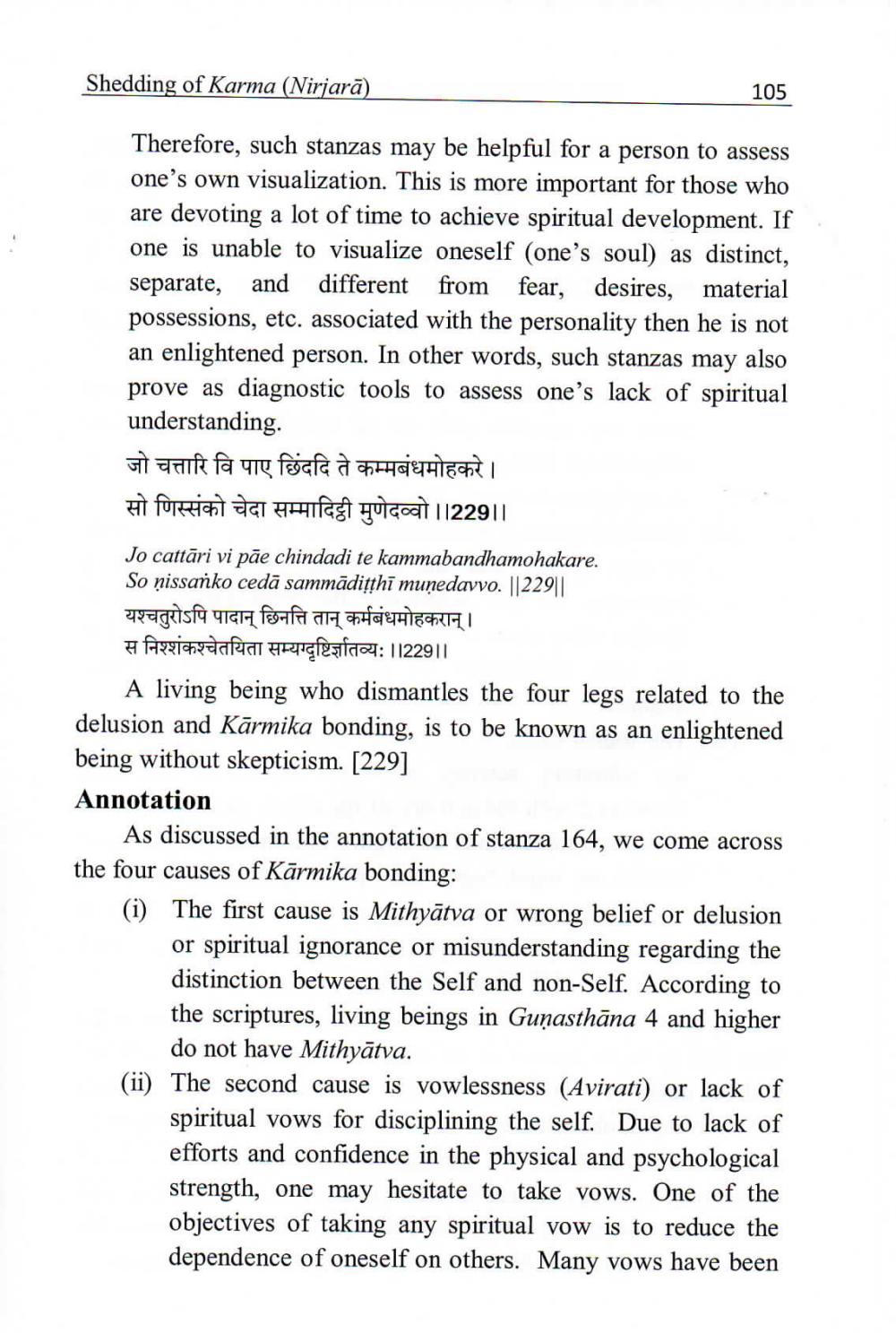________________
Shedding of Karma (Nirjarā)
105
Therefore, such stanzas may be helpful for a person to assess one's own visualization. This is more important for those who are devoting a lot of time to achieve spiritual development. If one is unable to visualize oneself (one's soul) as distinct, separate, and different from fear, desires, material possessions, etc. associated with the personality then he is not an enlightened person. In other words, such stanzas may also prove as diagnostic tools to assess one's lack of spiritual understanding जो चत्तारि वि पाए छिंददि ते कम्मबंधमोहकरे । Ht foreich der High Hutcod 1122911 Jo cattāri vi pāe chindadi te kammabandhamohakare. So nissanko cedā sammāditthi muñedavvo. ||229||| यश्चतुरोऽपि पादान् छिनत्ति तान् कर्मबंधमोहकरान् । a frigada Hepçiedot: 1122911
A living being who dismantles the four legs related to the delusion and Kārmika bonding, is to be known as an enlightened being without skepticism. [229] Annotation
As discussed in the annotation of stanza 164, we come across the four causes of Kārmika bonding: (i) The first cause is Mithyātva or wrong belief or delusion
or spiritual ignorance or misunderstanding regarding the distinction between the Self and non-Self. According to the scriptures, living beings in Guņasthāna 4 and higher
do not have Mithyātva. (ii) The second cause is vowlessness (Avirati) or lack of
spiritual vows for disciplining the self. Due to lack of efforts and confidence in the physical and psychological strength, one may hesitate to take vows. One of the objectives of taking any spiritual vow is to reduce the dependence of oneself on others. Many vows have been




